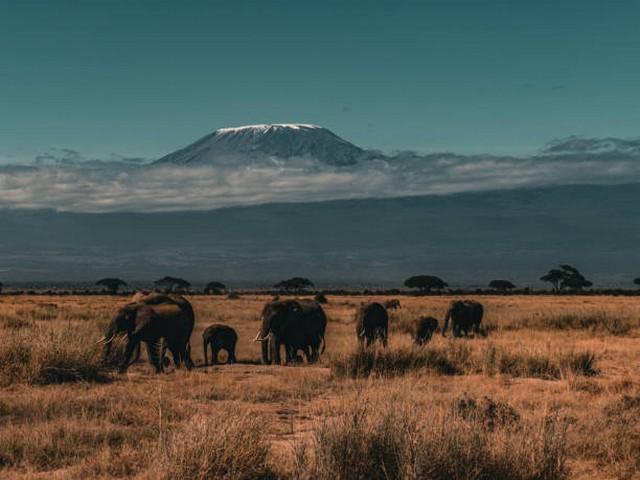How To Prepare For A Solo Kilimanjaro Trek: Your Guide to Success
Embarking on a solo trek to Mount Kilimanjaro represents not just a physical challenge, but a voyage into the depths of your soul. As the highest peak in Africa, Kilimanjaro calls to adventurers from around the globe with its majestic beauty and the promise of a personal transformation. Whether you are a seasoned trekker or a beginner with a burning desire to stand atop this iconic mountain, preparing adequately is your key to a successful and fulfilling journey. At Kilimanjaro Centre for Trekking and Ecotourism (KCTE), we specialize in helping solo adventurers like you turn your Kilimanjaro dreams into reality.
Understanding the Challenge Ahead
Know the Mountain
Mount Kilimanjaro, standing tall at about 5,895 meters (19,341 feet), is not just another trekking spot; it’s a collection of ecological systems that start from its base in the tropical Tanzanian plains and ascend through lush rainforests to alpine deserts and finally the arctic summit. Knowing the mountain means understanding the routes, the climate variations, and what each altitude offers and demands.
Select Your Route Wisely
Kilimanjaro offers several routes, each with its unique vistas and challenges:
- Marangu: Often called the “Coca-Cola” route, this is preferred by many solo trekkers due to its more gradual ascent and hut accommodations.
- Machame: Known as the “Whiskey” route, it is steeper and more demanding but rewards with spectacular views and a higher success rate.
- Lemosho: A longer route allowing better acclimatization and increasing your chances of success.
Choosing the right path aligns your physical capabilities and trekking experiences with the mountain’s realities.
Physical Preparation: Training for the Summit
Cardiovascular Endurance
Begin your training at least six months before your trek. Focus on building endurance through activities like running, swimming, or cycling. High-intensity interval training can also boost your stamina and mimic the high exertion levels needed for summit day.
Strength Training
Kilimanjaro is not just a walk; it’s a climb that demands lower body strength and core stability. Incorporate exercises like squats, lunges, and planks into your routine. Don’t overlook the importance of a strong back and shoulders for those long days with your backpack.
Altitude Readiness
While it’s ideal to train in high-altitude areas, not everyone has that luxury. Spend time on stair climbers or hill repeats. If possible, arrange a few high-altitude hikes to acquaint your body with reduced oxygen levels.
Mental Preparation: The Solo Trek Mindset
Embrace Solitude
A solo trek means periods of extended solitude. Be prepared to embrace it. Use this time for self-reflection or to enjoy the unfiltered beauty of Kilimanjaro.
Stress Management
Learn stress-reducing techniques such as meditation or breathing exercises. Being mentally calm helps in coping with unexpected difficulties.
Essential Gear and Logistics
Packing Smart
- Clothing: Layering is key. Include moisture-wicking base layers, insulating layers, and a waterproof outer layer.
- Footwear: Invest in high-quality hiking boots and break them in well before the trek.
- Navigation Tools: Although you’ll have professional guides from KCTE, a map, compass, or GPS can enhance your understanding of the terrain.
Travel and Permits
Ensure all travel documents are in order. Kilimanjaro National Park requires several permits, all of which KCTE will arrange for you as part of your trekking package.
Health and Safety Considerations
Vaccinations and Health Checks
Consult with a travel doctor about necessary vaccinations and health checks. Consider a full medical before committing to the trek.
On-Trail Health
Hydrate regularly, consume a high-calorie diet, and monitor for altitude sickness symptoms. Our guides at KCTE are trained to assist in health emergencies, ensuring your safety is always a priority.
Booking Your Trek with Confidence
Choosing the right tour operator is crucial for a successful solo Kilimanjaro trek. At Kilimanjaro Centre for Trekking and Ecotourism, we pride ourselves on providing expert guides, comprehensive trek support, and a commitment to ecological conservation. Booking your climb with KCTE not only ensures a memorable and safe adventure but also contributes to the sustainable development of local communities.
Embarking on Your Journey
As you finalize your preparations, remember that climbing Kilimanjaro is as much about the journey as it is the destination. Each step brings a new view, a new challenge, and a new opportunity to discover something profound about the world and yourself.
We invite you to book your solo Kilimanjaro trek with Kilimanjaro Centre for Trekking and Ecotourism. Let us be part of your journey to the roof of Africa, where the sky touches the summit, and your spirit soars.
FAQs
Q: How long does it take to prepare for a Kilimanjaro trek?
A: Ideally, start preparing at least six months in advance to condition your body and organize all necessary logistics.
Q: What is the best time of year to climb Kilimanjaro?
A: The best times are during the dry seasons, from June to October and from December to March.
Q: Can I trek Kilimanjaro alone without a guide?
A: No, Tanzanian law requires all trekkers to be accompanied by a licensed guide. KCTE provides experienced guides for all our climbers.
Q: What is the success rate for solo trekkers on Kilimanjaro?
A: Success rates vary by route and preparation but aligning with a seasoned operator like KCTE significantly enhances your chances of reaching the summit.
Join us at KCTE for an unforgettable solo trekking experience, where your dream of conquering Kilimanjaro can become a reality. Explore, dream, and discover with the best. Safe climbs and happy trails await!




